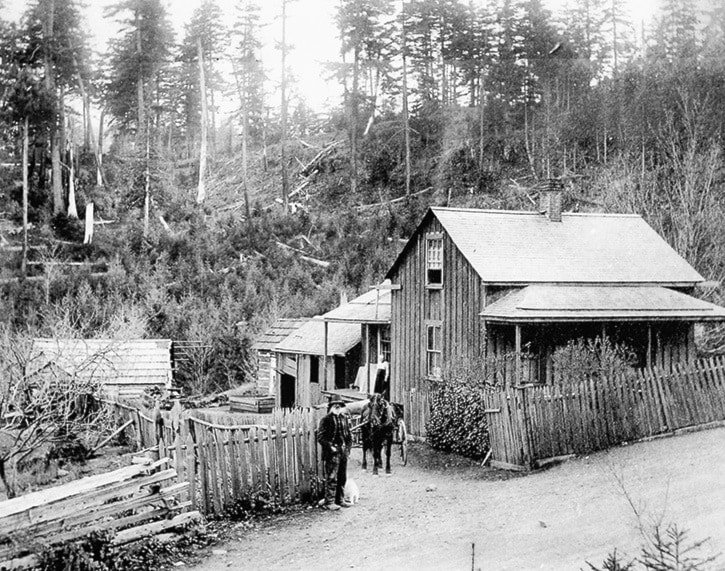British-born George Woodruff and his wife Mary Ann Turpin are seen in this photo taken in the early 1900s on Sooke Road.
The Woodruff family home stood just a bit west of Humpback Road, and if you glance to the south side of the highway today you will see a sign for Woodruff Road, named for the family.
The Woodruffs raised nine children, with the youngest born in this house in the 1890s. Settlers were few and far between on the route from Victoria to Sooke in those days, and the Woodruff home provided a welcoming stage stop for travellers.
When Yorkshireman William Anderson and his wife Azuba, who became the pioneer owners of Malahat Farm in Shirley in 1896, were travelling by horse stage west from Victoria, they stopped to feed the horses and have lunch at the Woodruffs. (Accounts show that their next stop was at the Charters home in Sooke, where the travellers were welcomed in for tea.)
The bearded patriarch in the photo, George Woodruff, was a bricklayer by trade; evidence of his work is the house’s brick chimney. His neatly shingled roof indicates a shingle mill nearby, while the outbuildings are roofed with hand-hewn shakes. The picket fence was constructed of split cedar. The horse and cart indicate a visitor, perhaps the person who took this photo.
The Woodruffs are one of those early families where the second generation married into other settler families. Woodruff son George married Ida White, a daughter of Aaron Denton White and Owechemis. Among this couple’s children was Alice who grew up to marry Lionel (Joe) Laberge and live on Woodlands Road in Sooke. Their log house still stands.
Woodruff son James, who worked at the Bamberton cement plant, married Margaret Caffery of the well-known Caffery family of East Sooke. Their son Clarence, who worked on road maintenance, was father to three sons, Mick, Larry and Tim, who each live with their families in the Humpback Road area today, and two daughters, Patricia and Marie.
Woodruff sons Charles and Ernie operated a motor stage between Victoria and Sooke/Otter Point for a period in the 1920s and 1930s. Besides passengers, this stage was loaded with mail and supplies ordered from Victoria by the rural settler families. Early Sooke resident Gladys (Graignic) Soule remarked: “Charlie Woodruff used to say there was nothing he hadn’t brought a woman.”
While we haven’t learned the date this house was dismantled, it appears to have been prior to the 1950s; this image, though, offers a lasting glimpse of what pioneer life was like on Vancouver Island.
•••
Elida Peers is the historian for Sooke Region Museum.
